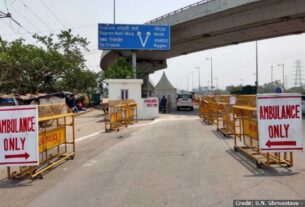Women make up 51 percent of the Bruhat Bengaluru Mahanagara Palike (BBMP) council in 101 wards of Bengaluru.
There has been a significant drop in the number of women ministers in India. In recent years, there is a drop from 23.1 percent in 2019 to 9.1 percent in 2021 in female representation according to World Economic Forum Report, 2021. There is also a drop in women competing in Karnataka Legislative assembly elections.
The latest Pew research on Indian attitudes toward gender roles showed that 55 percent of adults think that both women and men would make good political leaders. Despite research and studies showing that both men and women equally can make a good political leader. Sachin Tantry, spokesperson, B.PAC explained the reasons for low female participation in Indian Politics. He said, “One of the important things is that voters do not consider women as a good politician. Whenever women stand for elections, in spite of her being good, voters only vote for male candidates.” and that is one of the reasons India is seeing low female participation in politics.
Bangalore Political Action Committee (B.PAC) data on the participation of women in politics stated that as per the Karnataka legislative assembly: the ratio of women to males competing in Karnataka Legislative Assembly elections was 1:23 in 1957 and thus increased to 1:11 in 2018. As of 2018, Karnataka has only one female MP out of the 12 seats allotted to the state. On the other hand, women serve as corporators in 101 Bengaluru wards, that accounts for 51 percent of the BBMP council as of 2021. However, the problem is most of the women corporators are wives or ex corporators. Their husbands are taking all the decisions and working they do not even consider their wives’ decisions. “You are doing men empowerment here not women empowerment,” said B.PAC’s member.
Low female participation is across the world in politics. Also, there is a bias against women said women candidates. The Inter Parliamentary Unit’s annual report on Women in Parliament showed that the global percentage of women in national legislatures is only 25.5 percent until January 1, 2021, which is 1.5 percent increase than 24 percent in 2020.
Kaveri Kedarnath, Mandal president, BJP Maleswaram said it is a male dominated society. If any women want to join politics, then she must have a political backup. If she does not have a backup then women have to prove themselves to society.
In the political system, women became a face for their husbands. They do not even participate in decision making. All the things are done by their husbands. It starts from the grassroots level that most of the decisions are taken by men but headed by female politicians, said Sramana S, communication head at Ungender.
Women do make it into politics, but the issues start from the grassroots. At a panchayat level lot of women who are contesting elections and if they win then they have to give up their work or official roles to their husbands, or their brother or their father, she also said.
Sramana pointed out that it is a misconception that women cannot think rationally. This is the primary reason women are kept out of politics. It is the patriarchy that is gate-keeping so much female participation. “We know that there are so many women who would like to voice out, who would like to participate in decision making, and who would like to have their presence in politics. But patriarchy stops them from participating in various sectors of decision-making,” she further said.
In one of the reports of Association for Democratic Reforms (ADR) for Karnataka assembly election 2018, out of 2655 candidates there were only eight percent were women candidates who contested for the assembly election.
Numerous women were forced to stand for election as namesakes for their husbands. Sachin emphasized that many female candidates were often made to contest in elections as namesakes for their husbands what is the point of giving them reservation. “Reservation is not going to change anything; instead political parties should focus more on self-regulation.” The parties should have a say that they would consider women candidates in their parties and when this will happen there would be an increase in female participation, he said.
However, there is a mental bias against women across the world which is limiting them from entering the workplace. The gender ratio in science shows that only a marginal proportion of women participate in medicinal research. Sramana examined the gender gap in science, technology, Engineering and Mathematics (STEM), a project with school teachers there she found out that the girls who are going to school, their teachers, parents and community members told them not to take science, what if you fail.
Their families believed that will be a burden on the family because a girl has to use so many economic resources to study and ultimately if she does not get through the board exam, it is not going to make any sense. The first barrier starts very early in a primary unit which is family and then it goes to a secondary unit which is public places. Women are told that they belong to a primary place, patriarchy and social construct that is telling women do not belong here, said Sramana
Another thing which is responsible for the low participation of women in politics are political parties. As they have a major role in giving tickets to women candidates in their parties. “Once they will give them only, we can see a women candidate,” said political experts.
In another report by Association for Democratic Reforms (ADR) for Karnataka assembly election 2018. Only one of the 27 ministers chosen from the Member of Legislative Council (MLC) is a woman
Professor Trilochan Sastry, state coordinator, Association for Democratic reforms (ADR) said “political parties do not give tickets to women candidates. If they start giving more tickets to women candidates then we can see more women contesting for elections in our country.”
To take women seriously we must start from the grassroots, to make a change in family structure, institutions prevailing in our society. “Representation matters a lot, to be gender inclusive, to be gender-neutral we must have more gender diverse representation of women in the decision-making body and in electoral politics,” Sramana said.




